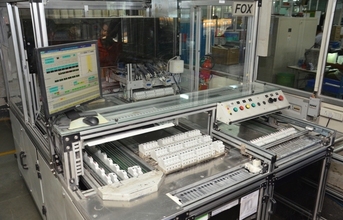
Agility and flexibility Manufacturing companies need to have shop floor agility and flexibility both in terms of products and processes. This involves implementing changes and improvements quickly, efficiently and cost-effectively. How does industrial automation help organisations on this front?
Lauenroth of VW India shares that Pune Plant was established with a long term perspective. "Hence the automation, wherever done, was set up in a way that it could be adapted to the changes and improvements done in manufacturing over a period of time. Also, it should be noted that we are using the same robots for manufacturing different products. For example the ‘Konzern Framer' enables us to build up to four different types of bodies on the same line through automation. Here also, the automation provides enough flexibility to change from one body style to other without hassle," he says.
Kulkarni of Siemens says that new age automation solutions are much more than doing just basic automation tasks. "With the advent of technology and latest techniques such as Totally Integrated Automation, Profinet etc. automation solutions today are not only state-of-the-art but also extremely flexible. Due to continuous changing demands from consumer market, manufacturers require automation solutions that are easily adaptable and enable them to take new finished goods (with changed specifications) to the market in the least possible time. Automation based on this key factor makes the investment of the manufacturer ‘Future proof'."
At Legrand's shop floor flexibility is ensured by classification of products in to fast movers and strangers (slow movers). A separate cell is created for strangers in order to avoid conflict with fast movers. A single piece flow results in improved takt time with the reduction of overall Throughput time. SMED is being used wherever the changeover times eat the value of the machine thereby reducing loss to a major extent. "We also have Small Group Improvement Activities (SGIA), which ensures 100 percent commitment of all stakeholders to a process of continuous improvement like Kaizen. This in turn results in quick and effective process improvements," Legrand India's Chawla.


























